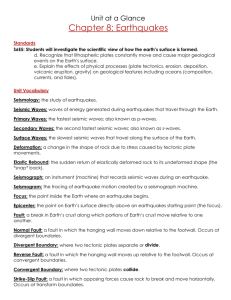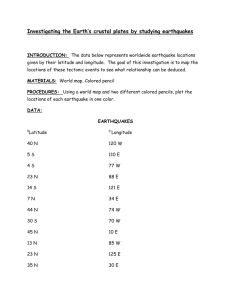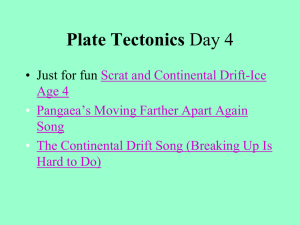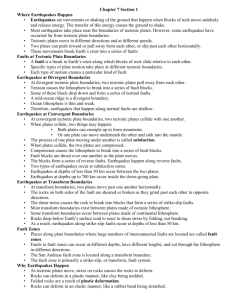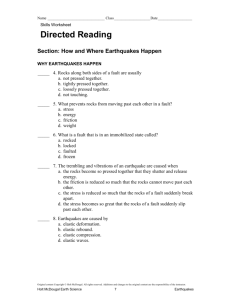Eartquakes: Movement of the Earth`s Crust
advertisement
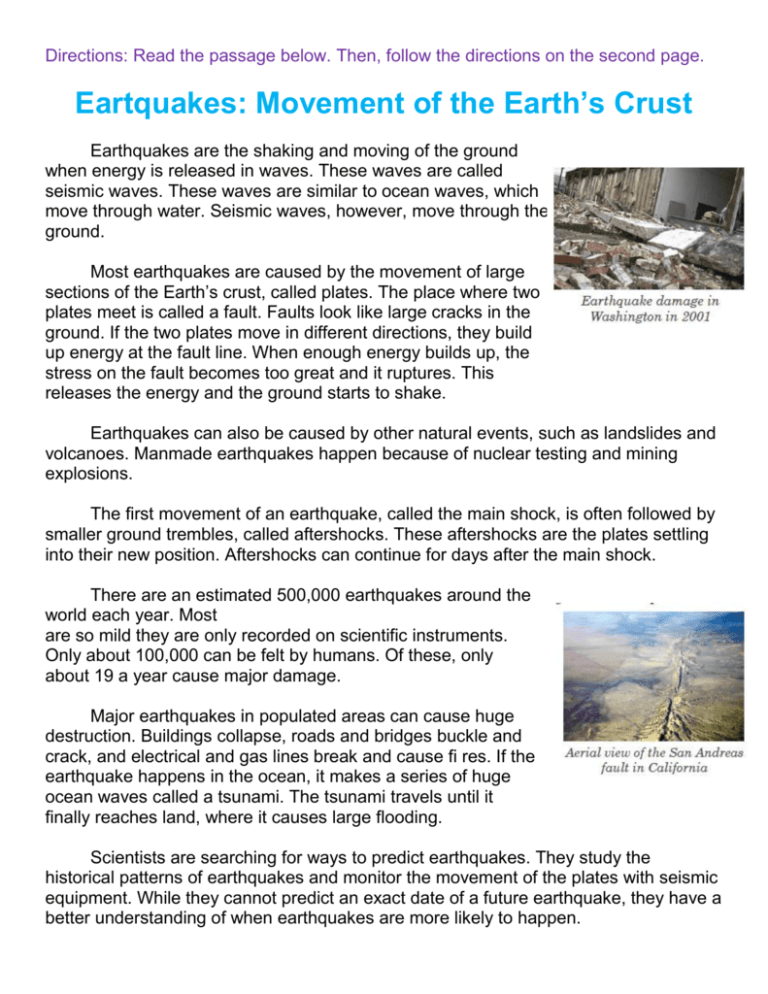
Directions: Read the passage below. Then, follow the directions on the second page. Eartquakes: Movement of the Earth’s Crust Earthquakes are the shaking and moving of the ground when energy is released in waves. These waves are called seismic waves. These waves are similar to ocean waves, which move through water. Seismic waves, however, move through the ground. Most earthquakes are caused by the movement of large sections of the Earth’s crust, called plates. The place where two plates meet is called a fault. Faults look like large cracks in the ground. If the two plates move in different directions, they build up energy at the fault line. When enough energy builds up, the stress on the fault becomes too great and it ruptures. This releases the energy and the ground starts to shake. Earthquakes can also be caused by other natural events, such as landslides and volcanoes. Manmade earthquakes happen because of nuclear testing and mining explosions. The first movement of an earthquake, called the main shock, is often followed by smaller ground trembles, called aftershocks. These aftershocks are the plates settling into their new position. Aftershocks can continue for days after the main shock. There are an estimated 500,000 earthquakes around the world each year. Most are so mild they are only recorded on scientific instruments. Only about 100,000 can be felt by humans. Of these, only about 19 a year cause major damage. Major earthquakes in populated areas can cause huge destruction. Buildings collapse, roads and bridges buckle and crack, and electrical and gas lines break and cause fi res. If the earthquake happens in the ocean, it makes a series of huge ocean waves called a tsunami. The tsunami travels until it finally reaches land, where it causes large flooding. Scientists are searching for ways to predict earthquakes. They study the historical patterns of earthquakes and monitor the movement of the plates with seismic equipment. While they cannot predict an exact date of a future earthquake, they have a better understanding of when earthquakes are more likely to happen. Directions: 1) Save the document as Earthquakes followed by your initials. 2) Find each of the four words (ruptures, destruction, collapse, and predict) below by underlining them in the passage. 3) Change the color of the correct meaning for each of the following words from the passage (to red). 4) Once you decide the correct meaning of the word, go back to the passage and use the highlighter to highlight the word, or words (context clues), that helped you decide the meaning of the words for each number. 1) ruptures a) joins b) forms a new plate c) breaks 2) destruction a) panic b) damage c) worry; concern 3) collapse a) fall down b) catch fi re c) explode 4) predict a) prevent; stop b) know a future event c) study; examine

